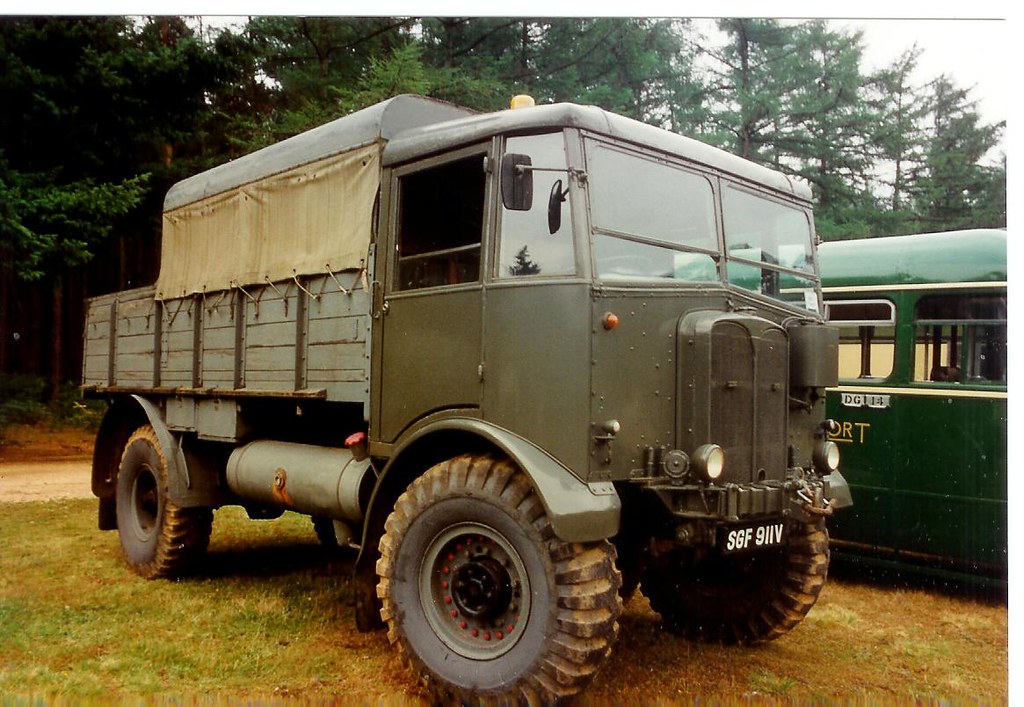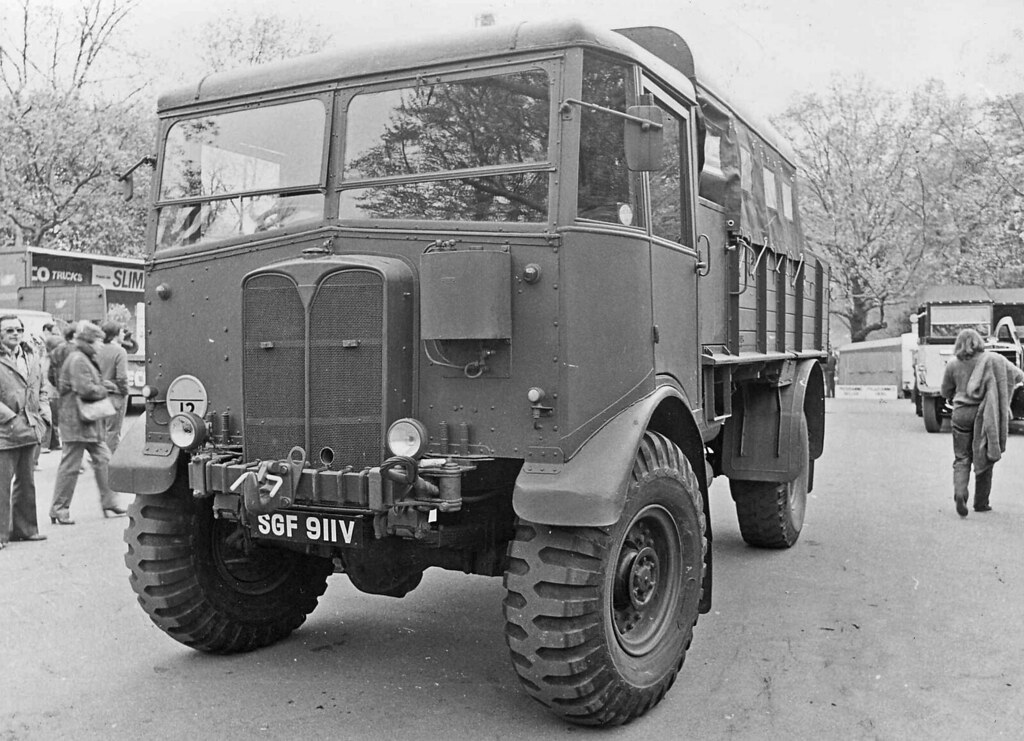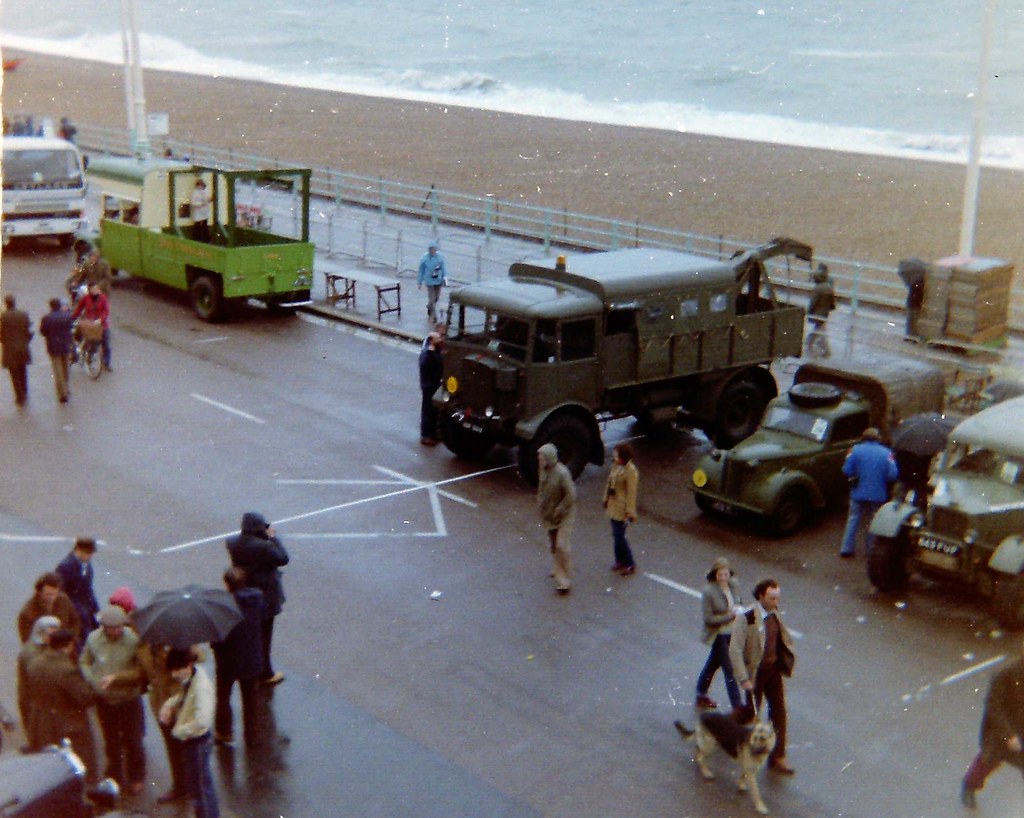-
Posts
128 -
Joined
-
Last visited
Content Type
Profiles
Forums
Gallery
Blogs
Events
Articles
Store
Downloads
Posts posted by NickAbbott
-
-
-
Since the move, the cab metalwork has been removed again, and cleaning the front of the chassis has been completed, along with cleaning the engine. Engine now painted - the colour used is is pretty close to the colour that was originally on the engine, when it was all cleaned up.
Also managed to get a few things that were needed - a replacement steering wheel, as the old one was fairly rusted, and had quite a few fairly big holes in it.
And some replacement tyres - new old stock.
One of the parts from the original tool kit is still with the lorry, the starting handle - do any other Matador owners have still have the starting handle it came with?
Nick
-
-
Just at the point of having nearly all the cab in pieces, and a lot of the easily removed mechanical parts off, we got about a months notice to leave the storage location. And to make it more complex, the lorry had to be drivable to easily get it into it's new location. So the cab metalwork was hastily blasted, and painted (see previous posting), and some new front panels made, and assembled (along with the existing metal framework), and the engine was put back together enough to get it running.
Engine ressembled and running, fuel being supplied by the new autovac, mounted on the bulkhead, being cooled by the overhauled radiator.
As the lorry needed to be unloaded in the road, I took the opportunity to tax it for the first time in 20 years! It now also has an age related number plate. This will obviously also be it's last ever tax disc, when they are phased out later this year.
Still a few more to come.
Nick
-
Not updated progress for a while, so here is a bit of an update, as there has been a fair amount.
Steady progress was made on taking the cab apart, and cleaning up the engine and surrounding areas. This picture shows the metal work still in place, but with most of the wood all removed, apart from the back of the cab.
Cab metalwork and all wood now removed and some cleaning and painting done.
This is the framework for the distinctive Weymann roof, or at least what is left of it - there was quite a lot of fibreglass holding it all together, as it had been repaired in the past. Some of the wood was completely missing. There are a lot more curved pieces of wood than in the Park Royal cab roof. Other than the roof, the rest of the cab structure looks pretty similar to the Park Royal cabs.
More to follow shortly.
Nick
-
-
As the title says - anyone know what a WL8 dashboard lamp looks like? I assume it's a lucas\cav part, as other Lucas dash lamps are in the WL series. Apparently fitted to Matadors, when trafficators were fitted.
Nick
-
-
The AEC Matador drivers handbook (dated 1943) has this sentence in it:
"When removing a wheel, be careful to unscrew the 10 inner nuts and NOT the 20 outer ones (which are painted red)."
Nick
-
If you are wanting to build a cab from scratch, the wood should be fairly straight forward, but there is also a fair amount of metalwork that supports the wood and fittings (not least the windscreens). Here is the lower cab metal framework - all these parts were supplied by AEC, with the chassis, along with the bonnet top and sides.
There is obviously more to it than this!
The above picture shows the lower framework from my cab, after being dismantled, blasted and after a coat of bonda primer. The rear section is fine, and some of the front to rear sections are ok, but one has completely rotted away at one point, and one of the others is holey all the way along and will need a lot of work to rebuilt it. The main rot seems to be where the cable trunking was fixed to the framework. I assume that it allowed a lot of dirt and mud to collect, and hold in the moisture.
Nick
-
Does anyone have a UK source for the ferrules that fit onto the end of flexible steel conduit, as used on the electrical systems on a lot of WW2 vehicles? It's fairly easy to get the steel conduit, but plain ferrules that fit on the end seem to be very elusive, unless you want to buy them in bulk from China! There are lots of other complex ones that can be obtained, which screw into panels, etc, but nobody seems to do the plain ends.
This is the sort of thing I'm after, in various sizes, between 10mm to 30mm:
Thanks for any help.
Nick
-
Time for a few more pictures.
The fuel tank was steam cleaned inside, and pressure tested for leaks - some of the original sign writing was still present, although not all of it unfortunately, but it was traced before the tank was cleaned up. I have also managed to obtain a new gauge from ebay, as the face was missing from the one fitted. The photo also shows a few other metal cab components, which have been blasted and given a couple of coats of bonda primer.
The wings are pretty good, although they have been repaired before, so instead of making them perfect, I have repaired the rusted sections, and left the original repairs. Most of the repaired sections will be hidden when they are put back on anyway.
When the lorry was originally picked up, the radiator leaked, so an overhauled radiator was obtained from ebay fairly cheaply. Thh bottom tank was removed to check the tubes, which were all completely clear. A new coat of paint, and it's as good as new!
More pictures soon.
Nick
-
A couple few pictures...
One of the most distinctive things about petrol Matadors, is the autovac. When we first looked at the lorry, the autovac looked like it had a small amount of rust on the bottom, and it held petrol, although it did weep a bit. The fuel stayed in long enough to be able to get the engine running, and drive it to the low loader. 3 months later, it leaked pretty badly, and a few months after that, this is what the bottom looked like, after a bit of poking! The pile of rust came out of the bottom of the tank.
The autovac has been rebuilt - it's basically a new tank, with all the old fittings and was made by these people, using the same techniques as originally used - http://www.autovac.co.uk/
Having removed the autovac, it exposes the plate that has been riveted over the location of the original vent, which appears to have been removed when the petrol conversion was done.
Nick
-
The cab framework looks good - where did you get those made?
Nick
-
NICK the list of the seventeen petrol AEC MATADORS has now given me a link to what was to happen to them
some were sold before 1948 some stayed in service like 085113 in 1948 it got the postwar number 86 yy 72 l now need to check the others
REGARDS WALLY
Wally, I've attached the rest of the document if it's of any interest, as it's dated 1943, and covers all chassis numbers up to about 8000, and what type they were. The log card I got from the RLC had another petrol Matador on it aswell as mine, if that is of any interest, which was 8531701, which got 95 YY 39, and was disposed of in June 1959. My one ended up with 95 YY 47.
Grasshopper, I think it did a lot of unusual recoveries - one of the pictures I have from Coussens shows it recovering a tractor on it's side in a trench!
Nick
-
So here is the "Certificate of Transfer", issued when the vehicle was sold at auction. Someone gave me copy of this a few months ago, which allowed us to trace the first owner after army service. They were also able to provide a few photos of the Matador when they were using it for recovery work.
And here is a list of the chassis numbers of the 17 early Matadors that were converted to petrol.
Again this came from the same source a few months ago. The other batch of petrol engined Matadors were 8531624 to 8531773 - so under 170 in total.
Nick
-
Richard, that's a nice picture, I think some of the others I posted links to were from the same London to Brighton run. It was used around this time for a fair amount of recovery work, getting old buses out of fields and that sort of thing I think. So I don't know if it was actually entered into the run, or just attending as a tender vehicle.
This is what it looked like after it had been collected and had had a bit of a wash. You might be able to see that some of the roof is now missing, but the rest of it is pretty complete.
Unfortunately, we don't have enough space to completely dismantle the vehicle, so the restoration is having to be done bit by bit. The current plan, which has been in progress for a couple of years now is to leave the rear body as it is for now, and work around it. Clean and paint the chassis, and rebuild the cab. It will obviously be much better to rebuild the cab onto a nice clean chassis, with a clean and painted engine. The first thing to come off was the fuel tank, which exposed a large section of chassis that was cleaned with a wire brush, treated with genolite and given a couple of coats of bonda prima, before a grey primer followed by bronze green.
Having cleaned enough oil and grease off various chassis components, the first and only coat of paint on a lot of the chassis and components is bronze green - the same colour as my series 1 Land Rover (matching a part from the cab which has not been exposed to light). So a quantity of Land Rover bronze green paint has been purchased.
Nick
-
Thanks Mel, PM sent. I have also heard that the windows on Matadors were fine mesh, but not seen any real or documented evidence to confirm that. I know early Land Rovers also had a fine mesh instead of plastic for the rear windows in the canvas hoods.
Nick
-
what a rare and interesting truck last time l heard about it was when it was in the ownership of nicholson a similar one
was sent to india it had a flat roof cab if you did not know its wartime registration was H 133460 IT WAS SAID that late in the war after a rebuild it was change to H 1736O77 l look forward to seeing it progress
regards wally
Wally, Tim Nicholson was the previous owner, who I bought it from, he had owned it since about 1980 I think. I have a list of all the early Matadors that were converted to petrol, and another one of them survives in Birmingham, although it isn't restored and doesn't have the petrol engine any more. Does anyone know of any more, as I have been led to believe this is a unique survivor? Are there any petrol 854s still around, or are they all converted to diesel aswell?
If you (or anyone else) have any info on what it did during the war (or any leads to try) I'd be very interested Wally, as so far, all I have is the disposal date via the RLC, and a copy of the receipt when it was sold from the army in 1960. We've been able to deduce roughly when it would have been delivered, based on the AEC date codes on various components, which show December 1939 and January and February 1940. Interestingly enough, the unions that connect the petrol and vacuum pipes through the bulkhead are dated June 1940, indicating the petrol conversion may not have been done straight off the production line, as documented in the "AEC Contribution to Victory" book.
Nick
-
I know the former owner of the truck, and was riding in the cab in 1987 while he was dragging felled trees around Cobham bus museum with it. I was tempted to try and take it off his hands in the early 2000s but was a bit busy with my own 2 Matadors. Glad its gone to a good home.
Grasshopper - here is a link to a picture of it moving a tree after the 1987 storms,

And a few more pictures of it looking quite presentable!
Outside Cobham Bus Museum - http://www.flickr.com/photos/21437618@N02/6345026406/
At Southern Counties Trading at some point in the 1970's -

And at a few random rallies:
None of those pictures are mine, and if anyone else has any pictures of it, I would love to see them.
Nick
-
Thats going to be a real nice truck whens its done, glad to here you managed to get her started, and even better moving her under her own steam onto the loloader, did the air compressor still build up air while you were moving her, or has the tank got holes in.Good luck with the restoration.Howard
Howard, before moving it, we were able to pressurise the system using an external compressor, and tightened a few joints that were leaking, so it holds air ok, and I think we did get air up when we first got it running, but didn't move it at the time. There wasn't really a big need for the brakes when it was first moved though - when you took your foot off the accelerator, it stopped due to the brakes binding! When we moved it last time, a few weeks ago, there was no sign of any air in the system, so the compressor will probably need a bit of work.
Nick
-
Hi Nick,
Great pictures, what an interesting truck, looking forward to seeing more as you progress.
Are the windows on the rear body side screens made of fine mesh or clear plastic??
I think I have a spare bottom for the cab rifle rack if you are interested??
Regards
Mel
Mel, the windows in the back are plastic, although they have biodegraded, and the canvas gave out when we picked it up, and we had to cut them off at the side of the road :cry:. it's difficult to gauge if they are original or not, as they may have been replaced when it was repainted in the 80's, which would make them 30+ years old anyway! Regarding the rifle rack bottom, if you have a spare you would part with, I'd be happy to take it off your hands - pm me the details please.
More pictures in a few days :cheesy:
Nick
-
-
Ok, due to a number of you expressing interest in my Matador restoration, I have started a restoration blog. Not much there yet, but hopefully I can bring it up to date in a short while, and then keep anyone interested updated with progress!
http://hmvf.co.uk/forumvb/showthread.php?41492-AEC-Matador-853
Nick





































AEC Matador 853
in Blogs of MV restorations
Posted
Ian, no the brake valve hasn't been apart. It was working before, and having cleaned it up, it should come off easily if it needs to at a later date. We'll only really be able to check everything works ok once it all goes back together, and be driven properly - so a good while yet I should think!
Cheers
Nick